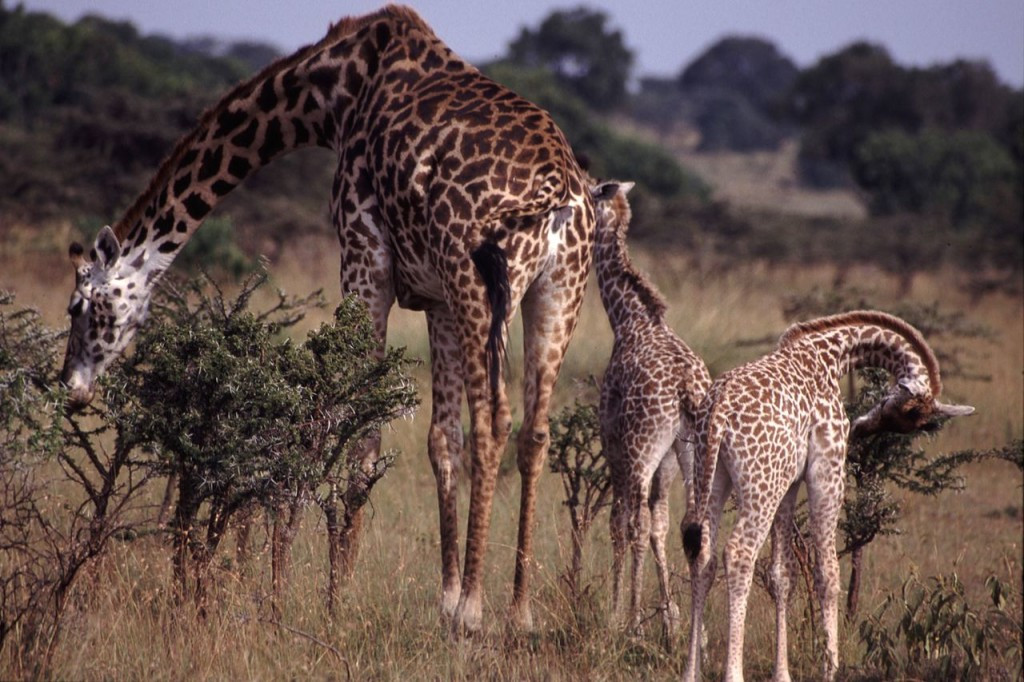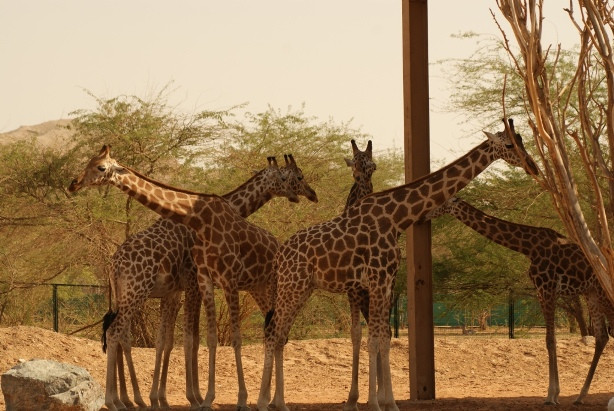Are you intrigued by the sounds of the animal kingdom and wondering How To Make A Giraffe Sound? Streetsounds.net dives deep into the fascinating world of giraffe vocalizations, revealing the science behind their unique sounds and exploring how these sounds contribute to the vibrant soundscape of urban life and beyond. Discover the hidden acoustic dimensions of these gentle giants and how they resonate with the rhythm of city sounds, offering new perspectives for sound design and inspiration for creative projects. Dive in to explore giraffe noises, vocal communication, and unique animal sounds today.
Table of Contents
- Why Is It So Difficult To Determine The Sound Of A Giraffe?
- What Vocalizations Have Been Ascribed To Giraffes?
- How Does Giraffe Social Structure Relate To Vocal Communication?
- Where Did Researchers Collect Data On Giraffe Sounds?
- What Challenges Did Researchers Face When Trying To Record Giraffe Vocalizations?
- What Unique Vocal Pattern Did Researchers Discover?
- What Is The Potential Meaning Of The Giraffe’s Humming Sound?
- What Technological Solutions Can Improve Giraffe Sound Research?
- What Are Some Common Sounds In Urban Environments That Resemble Giraffe Sounds?
- How Can Giraffe Sounds Inspire Sound Design And Urban Music?
- FAQ Section
1. Why Is It So Difficult To Determine The Sound Of A Giraffe?
It’s tough to pin down the sound of a giraffe because they’re not very chatty compared to other mammals. According to research from the University of Vienna, giraffes are far less vocal than many other related mammals. People watching giraffes in zoos or the wild often find them silent, leading to the idea that their long necks might make vocalization physically impossible. The long necks make it difficult to push air from their lungs to their mouths. The silence makes it hard to record and study their sounds effectively.
Giraffe vocalizations are rare and subtle. This makes them difficult to capture. Streetsounds.net understands the challenge in finding and recording such elusive sounds. The rare vocalizations create a mystery around how giraffes communicate. This mystery has intrigued researchers and sound enthusiasts alike.
 Mother giraffe and calves feeding, showcasing their social behavior in the wild
Mother giraffe and calves feeding, showcasing their social behavior in the wild
2. What Vocalizations Have Been Ascribed To Giraffes?
Giraffes have been described as making a range of sounds, though these reports are anecdotal. These vocalizations include “bleats,” “brrr” sounds, “bursts,” “coughs,” “growls,” “grunts,” “lows,” “moans,” “moos,” “sneezes,” “snorts,” and even “snores”. These sounds indicate that giraffes do communicate vocally, although infrequently.
The variety of sounds associated with giraffes suggests a complex, if subtle, communication system. According to research from BMC Research Notes, these sounds vary greatly. The documentation also highlights the difficulty in consistently capturing and categorizing these noises. Streetsounds.net recognizes the potential for these sounds to inspire unique soundscapes. These sounds can add an element of surprise and wonder to urban music and sound design.
3. How Does Giraffe Social Structure Relate To Vocal Communication?
Giraffe social structure significantly influences their vocal communication. Recent research indicates that giraffes have a structured social system with strong social bonds, contrary to previous beliefs. Species with similar social structures, like elephants and buffalo, rely heavily on vocal communication to maintain group cohesion.
According to a study in the Animal Behaviour journal, the structured social system of giraffes implies that vocal communication plays a crucial role in maintaining group cohesion. Streetsounds.net sees how understanding these social dynamics can inspire new approaches. These approaches can be used to explore urban social sounds and interactions.
4. Where Did Researchers Collect Data On Giraffe Sounds?
Researchers collected data on giraffe sounds from three zoos across Europe to study their vocalizations. According to BMC Research Notes, the data collection sites were located in Berlin, Copenhagen, and Vienna. These locations provided controlled environments where researchers could record giraffe vocalizations.
The decision to collect data from multiple zoos ensured a diverse sample of giraffe sounds. According to a report by the University of Vienna, this approach helped to overcome the challenges of studying giraffe vocalizations in the wild. Streetsounds.net understands the importance of these controlled settings for capturing clear and detailed audio.
 Giraffes in a zoo environment, indicating the controlled settings for sound research
Giraffes in a zoo environment, indicating the controlled settings for sound research
5. What Challenges Did Researchers Face When Trying To Record Giraffe Vocalizations?
Researchers faced several challenges when trying to record giraffe vocalizations. According to Dr. Angela Stoeger and her team, the primary challenge was the infrequency of giraffe vocalizations. The team spent hundreds of hours recording, finding very few instances of actual vocal communication.
The scarcity of vocalizations made the research time-consuming and demanding. As noted in BMC Research Notes, the team described exploring giraffe vocal communication as “time-consuming, tedious, and very challenging”. Streetsounds.net acknowledges these difficulties. It appreciates the dedication required to capture such rare sounds.
6. What Unique Vocal Pattern Did Researchers Discover?
Researchers discovered a unique vocal pattern: a humming vocalization with a rich harmonic structure. This sound had never been documented in scientific literature before. According to the research published in BMC Research Notes, the humming was recorded 65 times across the three zoos.
The humming was particularly notable because it was only recorded at night and never heard by zookeepers. The University of Vienna’s acoustic analysis indicated that this humming could potentially function as a form of communication between giraffes. Streetsounds.net finds this discovery intriguing. It highlights the hidden acoustic dimensions of animal communication.
7. What Is The Potential Meaning Of The Giraffe’s Humming Sound?
The potential meaning of the giraffe’s humming sound is linked to maintaining contact within the group. According to the researchers, the humming was only recorded when giraffes were separated into individual stalls at night. This suggests the humming allows giraffes to stay in touch when they cannot see each other.
Researchers speculate the humming helps giraffes remain connected when visual contact is impossible. As mentioned in BMC Research Notes, this could explain why giraffes are silent during the day when they can visually locate other group members. Streetsounds.net understands the importance of this type of communication for social animals.
8. What Technological Solutions Can Improve Giraffe Sound Research?
Technological solutions can significantly improve giraffe sound research. According to Dr. Stoeger’s team, one solution is developing automated monitoring/detection systems. These systems could link audio and video recordings to capture and analyze giraffe vocalizations more effectively.
Automated systems can overcome the challenges of studying giraffes in the wild. The BMC Research Notes article mentions the development of an automated audio detection system for elephants by the Stoeger group. Streetsounds.net believes that similar technology could revolutionize the study of giraffe sounds.
9. What Are Some Common Sounds In Urban Environments That Resemble Giraffe Sounds?
While giraffe sounds are unique, some urban sounds share similarities. Low frequency hums from machinery, distant moans of sirens, and the rhythmic grunts of construction equipment all have similar acoustic qualities. These sounds can evoke the same sense of mystery and intrigue as the giraffe’s newly discovered hum.
The urban soundscape offers many intriguing sonic parallels to the natural world. Streetsounds.net is dedicated to capturing and exploring these sounds. We provide a diverse library of high-quality urban sound effects. These sounds can be used in music production, film, and other creative projects.
10. How Can Giraffe Sounds Inspire Sound Design And Urban Music?
Giraffe sounds can inspire unique and innovative sound design and urban music. The subtle hums, rare grunts, and other vocalizations can be sampled, manipulated, and integrated into compositions. These sounds can add an element of surprise, depth, and natural wonder.
Giraffe vocalizations provide fresh perspectives for creative sound projects. Streetsounds.net encourages artists and designers to explore the potential of these sounds. Incorporating these elements can lead to groundbreaking works. These works resonate with both natural and urban environments.
 Giraffe profile, emphasizing the unique physical characteristics that might influence sound production
Giraffe profile, emphasizing the unique physical characteristics that might influence sound production
FAQ Section
What does a giraffe sound like?
Giraffes are generally quiet, but they can make sounds like bleats, grunts, and even a unique humming noise.
Do giraffes make noise?
Yes, giraffes do make noise, though they are not as vocal as many other mammals.
How do giraffes communicate?
Giraffes communicate through a variety of subtle vocalizations and possibly through non-vocal methods such as body language.
Why are giraffe sounds so hard to record?
Giraffe sounds are rare and often very quiet, making them difficult to capture without specialized equipment and a lot of patience.
What is the newly discovered giraffe hum?
The giraffe hum is a unique, low-frequency vocalization with a rich harmonic structure that was recently discovered by researchers studying giraffe sounds.
When do giraffes make the humming sound?
Giraffes typically make the humming sound at night when they are separated from each other in individual stalls.
Where can I hear examples of giraffe sounds?
You can explore sound libraries like the one at streetsounds.net for unique animal and urban sounds.
Can giraffe sounds be used in music?
Yes, giraffe sounds can be sampled and creatively integrated into music to add unique textures and elements.
What equipment is needed to record giraffe sounds?
Recording giraffe sounds requires high-sensitivity microphones, quiet recording environments, and a lot of patience.
How can I contribute to giraffe sound research?
You can support research efforts by zoos and universities that study animal communication and sound patterns.
Are you fascinated by the elusive sounds of giraffes and curious to explore more unique soundscapes? Visit streetsounds.net to discover a world of urban and natural sounds. Whether you’re a sound designer, musician, or simply an audio enthusiast, our extensive library offers high-quality recordings to inspire your creative projects. Dive into our collection and uncover the hidden sounds that bring our world to life.
Address: 726 Broadway, New York, NY 10003, United States
Phone: +1 (212) 998-8550
Website: streetsounds.net
